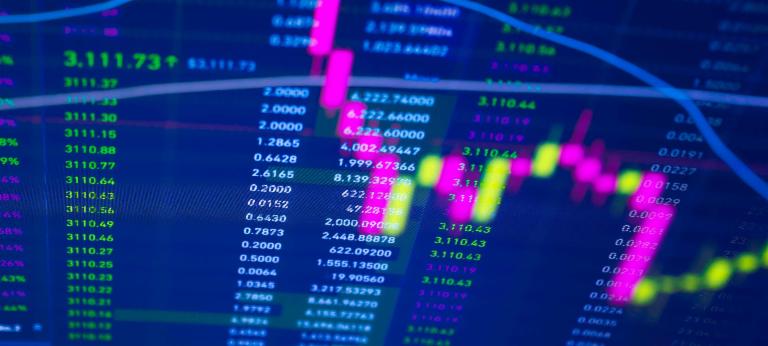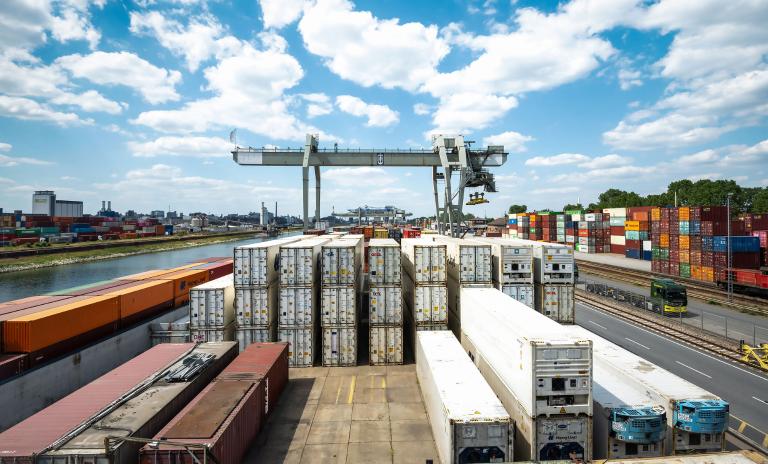What if – Germany becomes the sick man of Europe again?
![{[downloads[language].preview]}](https://www.rolandberger.com/publications/publication_image/Roland_Berger_INS_1156_What_if_Germany_becomes_the_sick_man_Cover_download_preview.jpg)
As time has passed, Germany has once again encountered economic challenges. This is perhaps no return to the late 90ies.


By David Born and Christian Krys
In 1999, Germany was labeled the "sick man of Europe" by The Economist. The country faced numerous challenges, including the complexities of reunification, a stagnant job market, and declining export demand, which led to double-digit unemployment rates. Then, a series of reforms in the early 2000s, initiated by the social democratic-led government (“Agenda 2010”), triggered a remarkable transformation.

As time has passed, Germany has once again encountered economic challenges. This is perhaps no return to the late 90ies (e.g. the unemployment is still around 5.8 percent while it was at over 11% in 1998), but Germany’s current economic issues are more significant than they initially appear.
Whereas between 2006 and 2017 Germany’s growth numbers outperformed many of its counterparts and kept pace with the US, today the German economy exhibits the weakest recovery from the pandemic among the EU countries and, along with Sweden, is the only major European economy without growth in 2023. Forecasts increasingly indicate that no significant growth can be expected in 2024 either.
"Germany's challenges are not new; however, the impacts of both the pandemic and the energy crisis have ruthlessly exposed its weaknesses and vulnerabilities."
In this edition of Roland Berger Institute’s publication series What if…, we will first discuss the symptoms of Germany’s new “sickness” and characterize its reasons by distinguishing between cyclical and structural factors. We will then highlight the strengths still characterizing the German economy that can serve as a foundation for its recovery. Finally, we estimate the economic impact of weak growth in Germany on the EU as a whole.
Germany, traditionally known for its strong manufacturing sector, has been experiencing a decline in industrial production for several years now. Industrial production was already in a downturn prior to the pandemic, which significantly exacerbated this trend. While other countries have largely recovered from the pandemic’s shock, the German industrial sector continues to trail significantly behind 2017 levels. Furthermore, the industrial share in German value-added has been decreasing, from 22.6 percent in 2017 to just 20.8 percent in 2021. Today, industrial companies, i.e. the vital core of Germany’s economy, complain mostly about the lack of skilled labor, high energy prices and excessive bureaucracy.
Germany's economic weakness is further underscored by survey results revealing a declining allure for foreign investments. A diminishing number of American corporations operating in Germany view the country favorably as a business destination. These findings are consistent with real investment trends. Over the past few years, the investment gap has been steadily widening, with German companies increasingly investing abroad, while foreign capital flows into Germany have been decreasing. This substantial increase in net capital outflows from Germany serves as a warning signal that the country's appeal as a business location is diminishing.
A number of cyclical factors dampen Germany’s economic outlook. Though inflation has surpassed its peak, it still remains higher in Germany than in many other major economies. This has led to a decline in the propensity to consume, which is having a negative impact on the economy.
With an export share of about half of the GDP, Germany’s economy is also more vulnerable to the volatilities of world trade than less export-oriented economies. In the past, the German GDP has developed consistently with global trade. For 2023, it is expected that global trade will grow by only a modest 1.5 percent. In particular, Germany's most important trading partner, China, is experiencing a period of economic weakness triggered by low private consumption and sluggish investment.
But Germany’s current crisis has also structural reasons. In addition to the sluggish economic momentum, productivity growth in Germany has been shrinking for decades. While its productivity grew at 3.8% p.a. between 1970 and 1980, this figure has fallen to just 1.0% p.a. in the decade between 2010 and 2020.
"Once again, bold reforms are overdue and necessary for getting Germany’s economy back on track."
Productivity growth plays a pivotal role in boosting wages and enhancing living standards, ultimately elevating consumers' purchasing power and stimulating demand for goods and services. Consequently, the deceleration of productivity growth raises concerns, especially in an aging economy that relies on productivity improvements to propel economic growth.
Apart from productivity stagnation, Germany’s current economic malaise is the result of several other structural factors: Comparatively short working hours and demographic change exacerbate the skilled labor shortage. Germany is also a high-cost location in many aspects. Energy costs were expensive even before the Russian invasion of Ukraine and are likely to remain at elevated levels. Finally, Germany´s bureaucratic burden is among the highest in industrialized economies. Starting and running a business in Germany is regulatorily more challenging than in other economies, especially regarding the duration of permitting procedures.
How to evaluate the gravity of the sickness described in the preceding paragraphs? Is there any hope for recovery? Indeed, there is. The traditional strengths of Germany’s economy have not lost their relevance overnight.
Thanks to its predominantly small and mid-sized enterprise structure and the presence of numerous hidden champions across various sectors, the German economy so far has proven able to quickly adapt to changing market conditions.
When considering innovation in key technologies, Germany’s economy is well-positioned. The innovation index published jointly by BDI and Roland Berger places Germany among the global top when it comes to innovation in the fields of key technologies. Thanks to its high-quality workforce with a strong STEM focus, Germany should also have the right brains to successfully handle the transformation ahead.
Furthermore, strict fiscal discipline in previous years kept the German government's debt-to-GDP ratio at an internationally low level of 61 percent in 2022. Thus, the government has still sufficient fiscal firepower to support economic reforms, even to initiate a kind of “Agenda 2030”.
What would be consequences for Europe if Germany will not recover and becomes the sick man of Europe? We developed three different scenarios. In the baseline-scenario we assume that Germany’s economy returns to weak but continuous growth in the next decade. The upside scenario supposes that – driven by strong growth among Germany’s major trade partners – export growth will be 2 percent above baseline, resulting in higher GDP growth. The downside-scenario assumes that Germany’s growth will be 1.5 percentage points lower than in the baseline-scenario (see Figure 4).
The outcomes of these scenarios show that stagnant growth in Europe's largest economy would drag down overall EU growth, causing higher unemployment and welfare losses for the EU citizens. The downside scenario would result in a cumulative loss of GDP for Germany of around EUR 66 bn, or 2 percent of GDP compared to the baseline scenario. For Europe, the damage would be even larger in absolute terms - GDP would be around EUR 96 bn lower than in the base case. The employment market in Europe would also be impacted with about 300,000 more people being unemployed as compared to the baseline scenario, most of these (250,000) in Germany. The upside scenario, in comparison, shows that stronger growth in Germany (around 88 EUR bn.) would improve the bloc’s economic outlook considerably (124 EUR bn.).
The 2010s were Germany’s golden decade but the conditions responsible for this period of solid growth have ceased to exit. Presently, Germany's economy confronts significant challenges. To rekindle a success story similar to the "Agenda 2010," which revitalized the country's economy in the past, bold reforms are imperative. While the contemporary challenges differ, a modern action plan is essential. Such an “Agenda 2030” – or whatever you want to call it – should encompass five key elements: reducing policy uncertainty, ramping up renewable energy, boosting investment in infrastructure, reducing bureaucracy and accelerating skilled labor migration.
![{[downloads[language].preview]}](https://www.rolandberger.com/publications/publication_image/Roland_Berger_INS_1156_What_if_Germany_becomes_the_sick_man_Cover_download_preview.jpg)
As time has passed, Germany has once again encountered economic challenges. This is perhaps no return to the late 90ies.